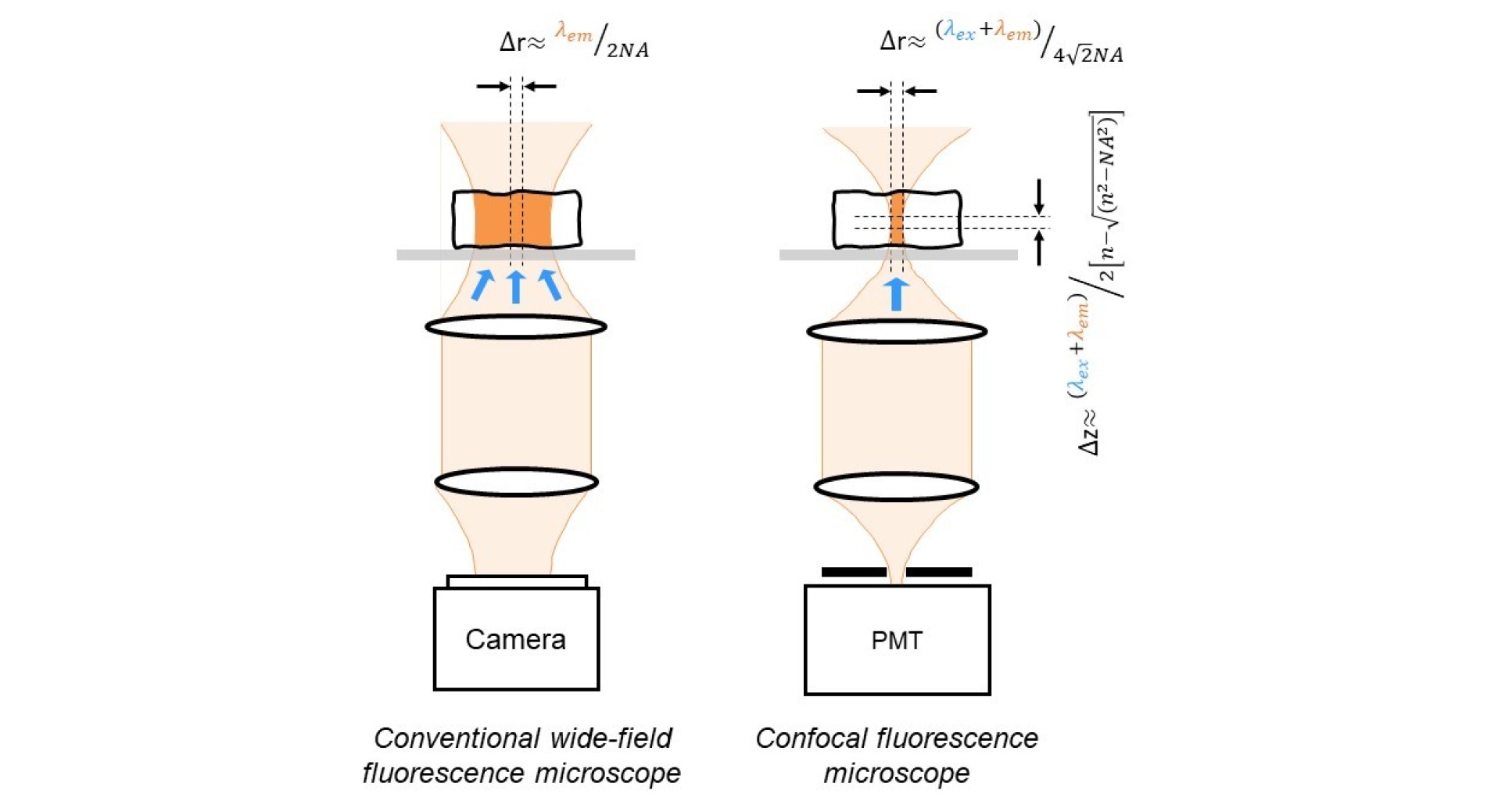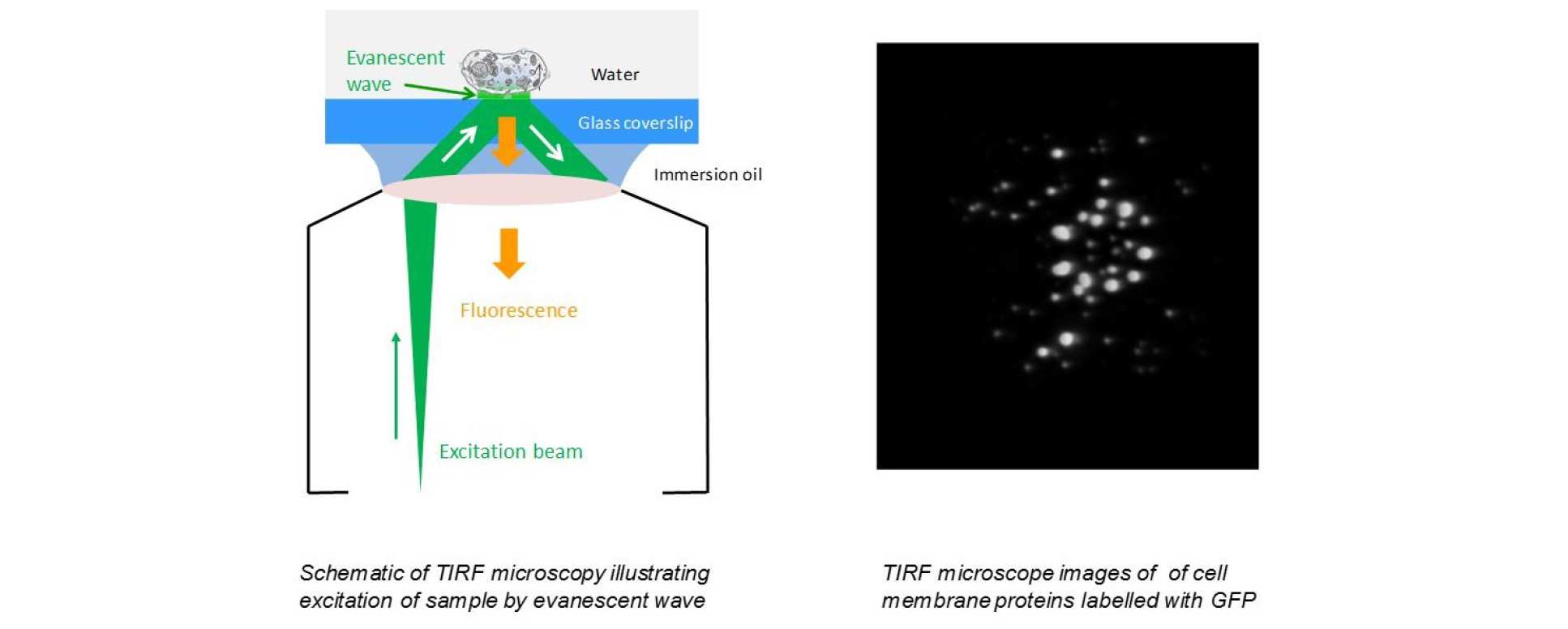Optically sectioning microscopes
- Confocal laser scanning
- Multiphoton laser scanning
- Wide-field optical sectioning
- Light-sheet microscopy
- Total internal reflection
Confocal laser scanning fluorescence microscopy
While the conventional wide-field microscope can provide high quality images of thin samples with a (diffraction-limited) lateral resolution of ~λ/(2NA), its performance is degraded when imaging thick samples. This is because the in-focus image of the sample in the focal plane of the objective can be swamped by a diffuse background formed by light from above and below the focal plane that will also be detected but will be out of focus. In fact, a wide-field microscope collects a similar number of photons from each focal plane – the photons collected from within the depth of field of the objective lens will form a clear in-focus image and the other photons contribute to the unwanted background. This problem was overcome in 1961 by the invention of the confocal microscope1, in which a point source of light is imaged to illuminate a spot in the sample plane and the reflected or emitted light from this point is then imaged onto a pinhole in front of the detector, as depicted in the figure below. This confocal arrangement means that only light from this spot in the objective focal plane is efficiently transmitted through the pinhole to be detected, since light arriving at the detector from points at other depths in the sample will not be in focus at the pinhole. By transversely scanning the point illumination across focal plane of the objective, an optically sectioned or depth-resolved 2-D image at a single depth in the sample is obtained2. By scanning the sample through the objective’s focal plane or by moving the microscope objective, a stack of such optically sectioned images corresponding to different depths in the sample can be acquired and combined to reconstruct a high resolution 3-D image. Confocal microscopy can be implemented with reflected or fluorescence light and is usually implemented using a laser beam to provide the required point illumination. This is an example of an optical sectioning microscope and provides axial resolution, forming an image only from photons originating within the depth of field of the objective lens.
Theoretically, the lateral resolution of a confocal microscope (with an infinitely small pinhole) is approximately √2 smaller than that of the corresponding conventional (wide-field) microscope. In practice, however, this lateral resolution is not obtained using a pinhole sufficiently wide to provide sufficient signal for most applications. The axial resolution, however, is preserved in real confocal microscopes with pinhole diameters up to ~1 Airy unit (AU, where 1 AU = 1.22λ/NA) and is approximately3: λ/[n - √(n2-NA2)].

Although 3-D imaging is an attractive capability, the impact of confocal microscopes has been much wider. The elimination of the out-of-focus blur improves the image contrast and makes confocal microscopy particularly useful for quantitative imaging, which has led it to become an almost standard tool in cell biology. Furthermore, before the development of the CCD camera, the laser scanning confocal microscope was the primary means to acquire digital images and the parallel development of personal computers led to the powerful image processing capabilities that are taken for granted today – indeed, digital image processing underpins most of the current advances in all imaging capabilities.
1 Minsky, M., Scanning, 10 (1988) 128
2 Conchello, J.-A. and Lichtman, J. W., Nature Methods, 2 (2005) 920
3 Wilson T., Journal of Microscopy 244 (2011) 113
